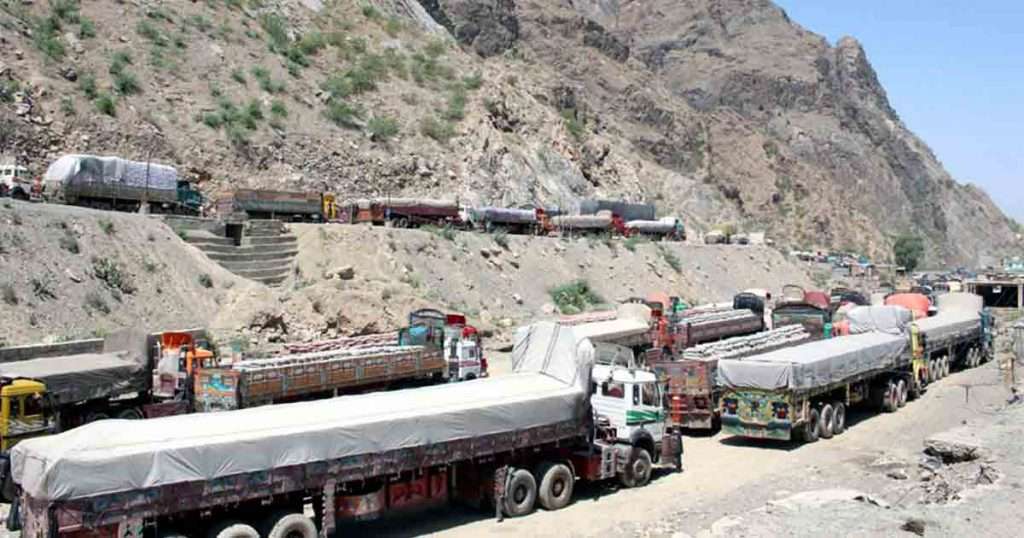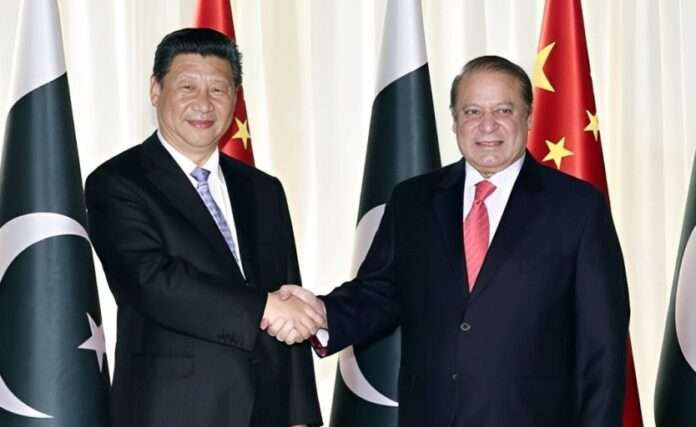Stephen P. Cohen describes geo-strategic significance of Pakistan as “While history has been unkind to Pakistan, its geography has been its greatest benefit.”(1)
1. The month of April has witnessed the historic signing of China-Pak Economic Corridor and other MOUs between friendly nations of Pakistan and China. The long awaited signing ceremony also fortified the existing friendly relations between the neighbouring countries. In China it is said that “Pakistan is a window through which China sees the West”. The phenomenon started when the first international flight to land at Shanghai airport in 1963 was PIA’s Dhaka to Shanghai service. A model of same aircraft is exhibited in Shanghai City Museum, which also depicts the glorious history of PIA. Another landmark is Pakistani assistance in materialising the covert visit of US Secretary of State Henry Kissinger to China in 1971 which paved the way towards establishment of diplomatic relations between US and China. The next historic event is the completion of Karakoram Highway between Gilgit and Kashghar in 1979. Although state level interactions between both countries were a regular process, people to people contacts have started mainly after the imports of Chinese goods at economical prices and rise of consumerism in Pakistan. Currently many Pakistani students are studying in Chinese universities in disciplines of medicine, engineering and humanities. Similarly around 15000 Chinese are working in Pakistan in various projects. People to people contacts are likely to increase in near future with influx of Chinese experts on mega projects and integration of returning Pakistani students in country’s economy.
2. Although a lot is being said on the importance of China-Pak Economic Corridor (CPEC) for regional and international connectivity as well as investment and job opportunities for Pakistan, very less is being discussed about the maritime arena. Since the importance of the corridor is underpinned by maritime trade through the deep sea port of Gwadar, this article focuses on the maritime prospects of CPEC. The importance of maritime trade in Pakistani and Chinese context will be highlighted and the way forward will be discussed. Effects of Suez and Panama Canal on global maritime trade have also been compared with prospects of CPEC and it has been proposed to develop the project as an international transit corridor for mutual benefit of regional and extra regional countries protected by UN convention during hostilities.
3. Gwadar deep sea port has been inaugurated since 2007, however, the benefits foreseen have not been achieved mainly due to deterioration in the law and order situation and lack of supporting hinterland infrastructure. Generally it is considered that the project is beneficial for development of Balochistan province and other far flung areas however there is a need to realise the potential benefits of the project for international trade. It is important to note that the maritime sector shares 90% of global trade.(2) Similarly, in the case of Pakistan, 98% of country’s trade is through maritime sector, primarily through Port Qasim and Karachi Port. Since landlocked states enjoy special privileges in international trading system, these ports also handle Afghan transit trade albeit most of Afghan transit trade is re-injected into Pakistani markets through smuggling.
4. The current maritime infrastructure of Pakistan is meeting trade requirement of Pakistan and Afghanistan only. In case of transit trade to western provinces of China there is a need to expand existing infrastructure and resources to support future trade requirements. Recent estimates state that 19% of Chinese exports and 16% of imports are bound to Europe. Additionally 3% of exports and 5% of imports are from Germany. Similarly, import of raw material from Saudi Arabia and Brazil is 3% from each whereas 5% is acquired from Australia.(3) It is interesting to highlight that currently Chinese western provinces have to rely on ports on the east coast of China for international trade. This involves considerable time and overland freight charges prior to shipment overseas. Reasonable estimates have highlighted that trade through CPEC will save 10,000 miles of transit distance between Western China and Eastern Europe. Other than freight charges, 20-30 days of time will also be saved thereby improving the supply chain management.
5. Additionally, the development of Gwadar as transshipment Port can bring revolution in the global oil trade. Currently 17 million barrels of oil passes through Straits of Hormuz every day which is 30% of whole seaborne traded oil(4). This oil fuels the economies around the world. The ships carrying large quantities of fuel ( VLCC – Very Large Crude Carriers), have to transit through Straits of Hormuz and Persian Gulf for three to four days for inbound transit. After embarking tremendous amount of fuel, these ships have to again transit for same time for outbound transit prior reaching North Arabian Sea. In toto these ships have to travel for eight days in dense shipping environment of Persian Gulf which possess significant navigational hazards. The construction of oil storage facilities at Gwadar for transshipment of global oil trade will facilitate the shipping companies and oil exporting countries equally by reducing the chances of accidents. In this case, smaller ships can bring oil from Persian Gulf ports to Gwadar oil storage facilities. Large ships can easily embark oil from deep sea port of Gwadar and proceed on long voyages with reduced navigational hazards and collision avoidance. In addition to oil, transshipment of LNG from Qatar and virtually landlocked states of Central Asia can also bring revolution in energy thirsty world. This idea has major prospects of success, especially after removal of sanction from Iran. As Iran is situated at the mouth of Gulf of Oman, oil exports from Iranian ports will be easier than GCC ports inside Persian Gulf. This may put GCC countries in geographically disadvantageous position. Although the price for one barrel of oil will be same, the freight charges and 6-8 days transit time will make the difference.

6. The discussion on benefits of CPEC for China and Gulf states brings us to benefits of corridor for landlocked states of Afghanistan and Central Asia. United Nations Convention on the Law of Sea-1982 accepts the sea as the common heritage of mankind. Since landlocked states do not have direct access to the sea they have been given special privileges in international trading system. Pakistan has been facilitating transit trade to Afghanistan and now it is the time to apply the experiences and lessons learnt to realise the potential of transit trade to the virtually landlocked states of Central Asia. Pakistan has religious and cultural affinity with these states and the close and cordial diplomatic relations can be furthered for mutual economic benefit. Most of the Central Asian States have vast reserves of hydrocarbons and other raw materials required by industrialised nations. Transit trade through CPEC will boost the economies of these countries and bring prosperity in Pakistan.
7. The CPEC project will not only bring prosperity in the region but will also facilitate global maritime trade similar to Suez and Panama Canal. The Suez Canal, constructed in 1869, provides the shortest distance from Mediterranean Sea to Indian Ocean through Red Sea and Gulf of Aden. Suez Canal is one of the world’s most significant waterways as it supports 8% of the world’s shipping traffic and almost 50 ships pass through the canal daily.(5) Travelling from Straits of Gibraltar to Muscat through Suez Canal is only 4300 Nautical Miles (NM) and 17 days transit whereas around Cape of Good Hope (South Africa) it takes 9800 NM and 40 days transit time.(6) Similarly, Panama Canal, built in 1914, provides shortest route between Atlantic and Pacific oceans saving 8,000 NM of distance and 30 days of time compared to transit around Cape Horn (South America). As highlighted earlier, trade through CPEC will also save 10,000 miles of transit distance and 20-30 days of time between Western China and Eastern Europe, hence providing shortest distance to China and Central Asian States. So there is a need to realise and propagate the real potential of CPEC for global trading system and develop the system as an international asset. It is important to highlight that Suez Canal is protected by Convention of Constantinople 1888 and Panama Canal is protected by the treaty of 1977. These treaties established the canals as a neutral international waterway and even in times of war any vessel is guaranteed safe passage. So there is a need to establish an international treaty under UN to term CPEC as the international transit corridor for global trade. This will provide international protection to the project and help in minimising threats.
8. In conclusion, Pakistan has been blessed with important geo-strategic location which is being planned for geo-economic benefits of region. The MOUs of China Pak Economic Corridor have been signed, which will not only strengthen the existing cordial relations between friendly nations of China and Pakistan, but will also beneficial for global trade. As Suez and Panama canals brought revolution in maritime trade, CEPC will also be instrumental in providing warm water access to Virtually land locked states of Central Asia. There is a need to realise the potential maritime prospects of the project and propagate it as an “international corridor for prosperity”. This international corridor should be protected by UN conventions to reduce the chances of hostile actions. A proactive approach in materialising the project will change the destiny of Pakistan and the region.
Footnotes
(1). http://www.saach.tv/2013/12/25/pakistan-viz-a-viz-region/#.dpuf
(2). https://business.un.org/en/entities/13
(3). http://www.intermodal-asia.com/files/aasim_siddiqui__apsa.pdfa
(4). http://www.eia.gov/countries/regions-topics.cfm?fips=wotc&trk=p3
(5). http://geography.about.com/od/specificplacesofinterest/a/suezcanal.htm
(6). http://www.sea-distances.org




